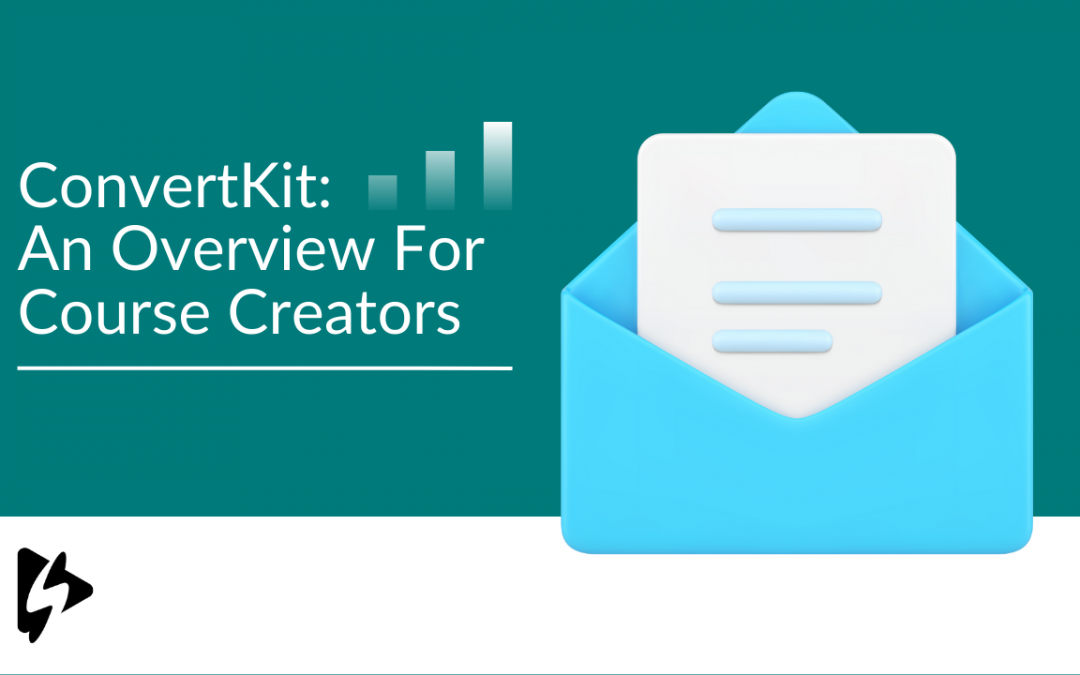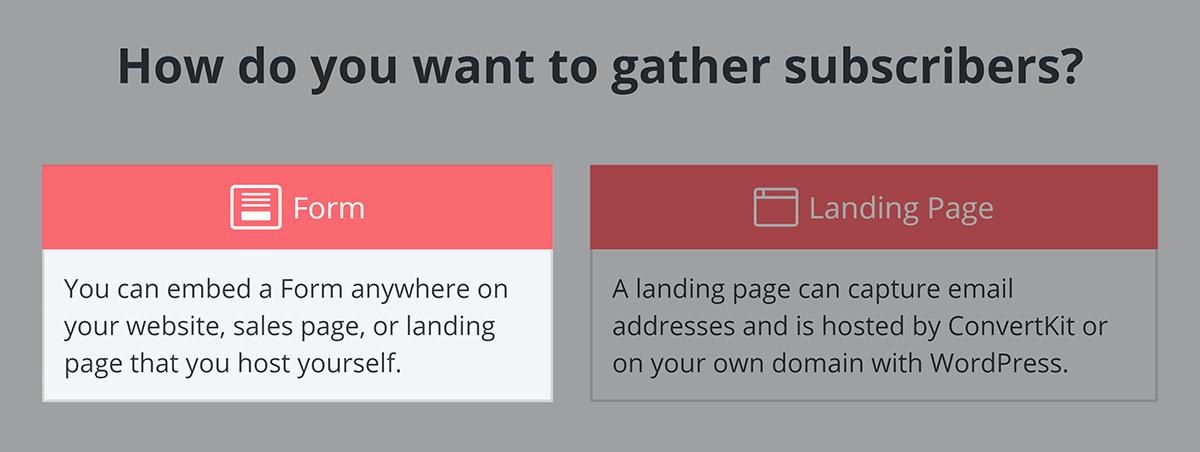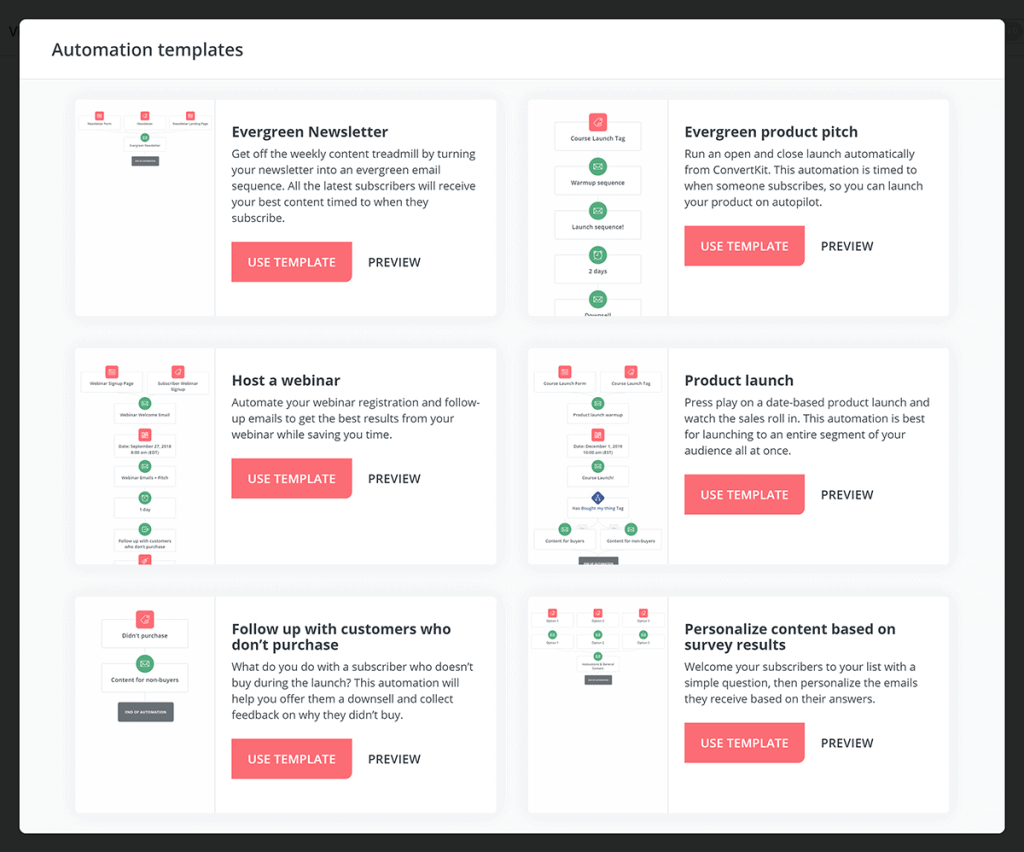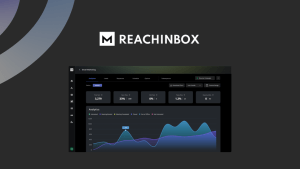ConvertKit is a popular tool for email marketing. It helps creators connect with their audience.
Email marketing can be overwhelming. Many creators struggle to build relationships with their audience. ConvertKit steps in to make this easier. It offers a user-friendly platform designed specifically for creators. Whether you are a blogger, author, or online educator, ConvertKit provides the tools you need.
You can send personalized emails, grow your subscriber list, and even automate your email sequences. This helps in saving time and increasing engagement. In this blog post, we will explore the various features and benefits of ConvertKit. We will see how it can transform your email marketing efforts. Ready to dive in? Let’s get started!

Credit: spotlightr.com
Introduction To Convertkit
ConvertKit is a powerful email marketing tool. Many bloggers, creators, and businesses use it. Its main goal is to help users grow their audience. It also helps build strong relationships with subscribers. ConvertKit is known for its simplicity and effectiveness.
This platform makes email marketing easier. It offers tools to create and send professional emails. Users can also automate their email sequences. This saves time and keeps subscribers engaged. ConvertKit is user-friendly and suitable for all skill levels.
Overview Of Features
ConvertKit has many features that make it unique. The first feature is email automation. Users can set up automated email sequences with ease. This helps in nurturing leads and keeping subscribers informed.
Another feature is the landing page builder. Users can create beautiful landing pages quickly. These pages help in capturing email addresses. ConvertKit also offers customizable email templates. These templates make it easy to design professional emails.
The platform includes segmentation tools. Users can group subscribers based on their interests and behavior. This helps in sending targeted and personalized emails. ConvertKit also provides detailed analytics. Users can track the performance of their email campaigns.
Why Choose Convertkit
ConvertKit is designed for creators. It focuses on simplicity and ease of use. Many other email marketing tools are complex. ConvertKit, on the other hand, is straightforward.
The platform offers excellent customer support. Users can get help through various channels. This ensures they can resolve issues quickly. ConvertKit also has a strong community. Users can connect with other creators and share tips.
Another reason to choose ConvertKit is its reliability. The platform ensures high deliverability rates. This means emails are more likely to reach subscribers’ inboxes. ConvertKit is also cost-effective. It offers various pricing plans to suit different needs.
In summary, ConvertKit is a great tool for email marketing. It is easy to use and offers powerful features. Creators can benefit from its automation, customization, and segmentation tools.

Credit: backlinko.com
Building Email Lists
Are you looking to grow your audience and keep them engaged? Building an email list is a great way to do that! With ConvertKit, you can easily create a list of subscribers who are interested in what you have to offer. Whether you are a blogger, entrepreneur, or small business owner, having a solid email list can make a huge difference in your marketing efforts.
Creating Sign-up Forms
The first step in building your email list is to create sign-up forms. ConvertKit makes this process simple and efficient. You can design forms that match your brand’s style and add them to your website or blog. These forms are crucial because they are the gateway for new subscribers to join your list.
- Drag-and-Drop Builder: With ConvertKit, you don’t need to be a tech expert. The drag-and-drop builder allows you to create forms without any coding knowledge. Just select your elements, arrange them, and customize the appearance.
- Multiple Form Types: Choose from a variety of form types including inline forms, modal pop-ups, and slide-ins. Each type serves different purposes and can be placed strategically on your site to capture more leads.
- Customizable Fields: Collect more than just email addresses. You can add fields for names, preferences, or any other information you find valuable.
Segmentation Techniques
Once you have subscribers, the next step is to ensure your emails are relevant to them. This is where segmentation comes in. ConvertKit offers powerful segmentation techniques to help you tailor your content to different groups within your audience.
- Tags: Tags allow you to label subscribers based on their actions or interests. For example, if someone downloads an eBook, you can tag them as “eBook download.” This helps in sending targeted emails later.
- Custom Fields: Use custom fields to store unique data about your subscribers. This could include their location, product interests, or how they found your website.
- Segments: Create segments by combining tags and custom fields. For instance, you could create a segment of subscribers who are tagged as “eBook download” and also live in a specific region.
By using these segmentation techniques, you ensure that your subscribers receive content that is relevant to them, increasing engagement and reducing unsubscribe rates. Isn’t that what every marketer dreams of?
In conclusion, building an email list with ConvertKit is not just about adding names to a database. It’s about creating a community of engaged readers who look forward to your emails. So why wait? Start building your email list today and see the difference it makes!
Designing Email Campaigns
Designing email campaigns can be a daunting task, but ConvertKit makes it simple and effective. This powerful email marketing tool provides everything you need to create stunning and engaging emails. From sleek templates to advanced A/B testing, ConvertKit helps you connect with your audience in a meaningful way.
Email Templates
ConvertKit offers a wide variety of email templates. These templates are designed to be visually appealing and easy to customize. You can choose from different layouts and styles to fit your brand. No coding skills are required. Just pick a template, add your content, and you’re ready to go. Save time and ensure consistency across your email campaigns.
A/b Testing
A/B testing is a powerful feature in ConvertKit. It allows you to test different versions of your emails. You can compare subject lines, content, and images. This helps you understand what works best with your audience. By analyzing the results, you can improve your email campaigns over time. Create more engaging and effective emails with each test.
Automation And Workflows
When it comes to email marketing, ConvertKit is a game-changer. It’s not just about sending emails; it’s about sending the right emails at the right time. This is where automation and workflows come into play. Think of them as your personal assistant, tirelessly working behind the scenes to nurture your audience and drive engagement. But how exactly do you set them up? And what are some practical examples? Let’s dive in!
Setting Up Automations
Setting up automations in ConvertKit is as easy as pie. Here’s a simple step-by-step guide to get you started:
- Log into your ConvertKit account: First things first, head over to your ConvertKit dashboard.
- Create a new automation: Look for the ‘Automations’ tab and click on ‘New Automation’.
- Choose your trigger: This is the action that will start your automation. It could be someone subscribing to your list, purchasing a product, or clicking a link.
- Add actions: This is where the magic happens. Decide what you want to do once the trigger occurs. You can send an email, add a tag, or move the subscriber to a different sequence.
- Review and activate: Double-check your settings and activate the automation. Voila, you’re done!
Workflow Examples
Now that you know how to set up automations, let’s look at some workflow examples that can help streamline your email marketing efforts:
- Welcome Series: When someone subscribes to your newsletter, automatically send them a series of welcome emails. Introduce yourself, share valuable content, and build a connection.
- Product Launch: Use automations to build anticipation and excitement before a product launch. Schedule a sequence of emails leading up to the big day.
- Re-engagement Campaign: If subscribers haven’t interacted with your emails in a while, send them a sequence to rekindle their interest. Offer them something of value to bring them back.
- Post-Purchase Follow-Up: After a customer makes a purchase, send them a thank-you email, followed by product usage tips, and a request for feedback.
Automations and workflows in ConvertKit are designed to save you time and increase your efficiency. They allow you to focus more on creating great content while ensuring your audience feels valued and engaged. So, why not give it a try?
Remember, the key to successful email marketing is personalization and timing. And with ConvertKit’s robust automation tools, you’ve got everything you need to make that happen.
Analyzing Performance
Analyzing performance is crucial in any email marketing strategy. ConvertKit offers robust tools that help you track and improve your campaigns. Understanding how your emails are performing can guide you to make better decisions and boost your success rate. In this section, we will dive deep into the key metrics you should monitor and some improvement strategies to enhance your email marketing efforts.
Key Metrics
To analyze your email performance effectively, you need to focus on specific metrics. These metrics will give you insights into how your audience is engaging with your content. Here are some key metrics you should keep an eye on:
- Open Rate: This indicates the percentage of recipients who opened your email. A higher open rate generally means your subject lines are compelling.
- Click-Through Rate (CTR): This shows the percentage of recipients who clicked on links within your email. It’s a good measure of how engaging your content is.
- Conversion Rate: This metric tracks the percentage of recipients who completed a desired action, such as making a purchase or signing up for a webinar.
- Bounce Rate: This tells you the percentage of emails that couldn’t be delivered. A high bounce rate can indicate issues with your email list quality.
- Unsubscribe Rate: This shows the percentage of recipients who opted out of your email list after receiving an email. It helps you understand if your content is relevant to your audience.
Improvement Strategies
Once you have a good grasp of the key metrics, the next step is to develop strategies to improve your performance. Here are some effective strategies to consider:
- Segment Your Audience: Group your subscribers based on their interests and behavior. Sending targeted emails can significantly improve your open and click-through rates.
- Optimize Subject Lines: Experiment with different subject lines to see which ones resonate best with your audience. Keep them short, clear, and enticing.
- Personalize Content: Use personalization tags to address recipients by their names and tailor content to their preferences. Personalized emails tend to perform better.
- A/B Testing: Test different elements of your emails, such as subject lines, images, and call-to-action buttons. Analyze the results to see what works best.
- Monitor and Clean Your List: Regularly remove inactive subscribers and ensure your email list is up-to-date. This can help improve your deliverability rates and reduce bounce rates.
By focusing on these key metrics and implementing these improvement strategies, you can optimize your email marketing campaigns with ConvertKit. Remember, the goal is to continuously analyze and adjust your approach to achieve the best results.

Credit: www.sarahhenson.co.uk
Frequently Asked Questions
What Is The Purpose Of Convertkit?
ConvertKit helps creators grow their audience, automate email marketing, and increase revenue through targeted campaigns and easy-to-use tools.
Is Convertkit The Same As Mailchimp?
No, ConvertKit is not the same as Mailchimp. ConvertKit focuses on creators, while Mailchimp serves broader businesses. Both offer email marketing but differ in features and pricing.
Is Convertkit An Email Provider?
Yes, ConvertKit is an email marketing service provider. It helps creators manage and grow their email lists efficiently.
How Much Does Convertkit Cost?
ConvertKit pricing starts at $9 per month for up to 300 subscribers. Plans scale with the number of subscribers.
What Is Convertkit?
ConvertKit is an email marketing tool. It helps you grow your audience.
Conclusion
ConvertKit is a powerful tool for email marketing. It helps bloggers, creators, and businesses manage their email lists. You can send personalized emails and automate campaigns. This tool simplifies communication with your audience. Using ConvertKit can grow your online presence.
It’s user-friendly and effective for email marketing needs. Start leveraging ConvertKit today to enhance your marketing efforts.







